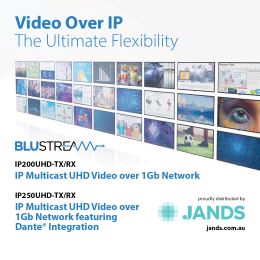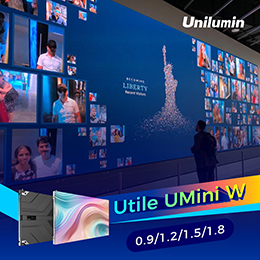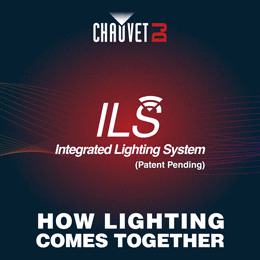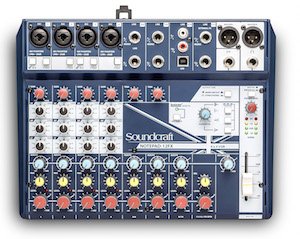News
19 Apr 2017

PL&S 2017 – New audio!

Subscribe to CX E-News
By Jason Allen
It’s been two years since I covered PL+S for CX, and in that time, the physical layout of PL+S and MusikMesse has flipped around, and the co-located shows offset by a day. Overall, I think it’s had a detrimental effect on both shows, but PL+S is still the healthier of the two. There was certainly no shortage of audio to report back on, even with a few notable brands missing.
With February’s ISE in Amsterdam commanding the attention of companies with a strong install business, a little of the gloss has come off of PL+S. Most conspicuous by their absences were Bosch (EV and Dynacord), Sennheiser, and HK Audio – all German firms that would have been on home turf. Meyer Sound were also not exhibiting. Talk around the show put the reasons for these decisions down to the increasing dominance of ISE, alternative marketing spend, and the fading appeal of Musikmesse.
On the last day, I took a walk through Musikmesse and found it a shadow of its former self. Most of the high-tech products like microphones and monitors that crossed-over from PL+S were gone. The instrument halls that remained were 50% of their former size, and all exhibitors looked like they’d spent the least amount of money possible on the show. It felt cheap and nasty, and you could drive a truck down some of the aisles. Back on the PL+S side though, elaborate stands, lots of product and full halls were the norm. So let’s have a look at the notable products and releases in audio world, with a couple of peripherals thrown in….
SSL – Live 200
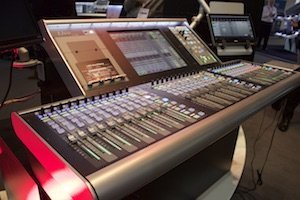 SSL have expanded their well-regarded Live series of desks with the more affordable and much smaller L200, which will be available for around $40K USD for a 64 channel version running at 48kHz. This puts the platform into the grasp most mid-sized production companies, who haven’t been able to afford the larger L300 and L500 models.
SSL have expanded their well-regarded Live series of desks with the more affordable and much smaller L200, which will be available for around $40K USD for a 64 channel version running at 48kHz. This puts the platform into the grasp most mid-sized production companies, who haven’t been able to afford the larger L300 and L500 models.
The L200 has 144 processing paths, which can be divided as up to 96 inputs, 48 auxes, 24 groups and 6 masters. On top of that, you can also mix to four 32 in, 24 out matrices. The operating system and processing are the same as its larger siblings, so show files can be transported across the range. Total fader count is 38 across three sections, including the Master and Focus faders. The touchscreen is a generous 17 inches.
Released alongside the surface was the new Network I/O SB 32.24 Stagebox, a 5U unit with dual redundant power supplies, 32 mic/line inputs, 16 analogue outputs, 8 digital inputs and outputs on 4 AES3 input/output pairs, and redundant RJ45 Dante network connections, all capable of running at 96kHz or 48kHz.
Martin Audio – 10 New Releases!
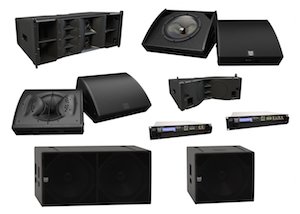 At a show that was honestly a little light-on for new audio releases, Martin Audio bucked the trend with 10 new products on offer. First, the Wavefront Precision Series, a new generation of multipurpose line arrays. Comprising the WPC (2 x 10” LF) and WPM (2 x 6.5” LF), Wavefront Precision line arrays are designed as complete systems, to be powered by the new iKON multi-channel amplifiers, and optimised with Martin Audio’s DISPLAY software. The range also added two new subwoofers; the SX118 and SX218, a single 18” and double 18”.
At a show that was honestly a little light-on for new audio releases, Martin Audio bucked the trend with 10 new products on offer. First, the Wavefront Precision Series, a new generation of multipurpose line arrays. Comprising the WPC (2 x 10” LF) and WPM (2 x 6.5” LF), Wavefront Precision line arrays are designed as complete systems, to be powered by the new iKON multi-channel amplifiers, and optimised with Martin Audio’s DISPLAY software. The range also added two new subwoofers; the SX118 and SX218, a single 18” and double 18”.
On the stage monitor side, Martin introduced the XE Series. The XE300 (1 x 12” LF) and XE500 (1 x 15” LF), which run Coaxial Differential Dispersion drivers with an additional contour-moulded static third waveguide that increases the size of the HF horn mouth to maintain pattern control over a wide frequency band and avoid spill outside the coverage area. The XEs are built to be powered by the new iKON 4 channel amplifier.
Also in monitor land, the Martin LE Series are an affordable range, including the LE100 (1 x 12” LF”) and the LE200 (1 x 15” LF). Using the same Coaxial Differential Dispersion drivers as the CDD-LIVE range, the LE Series monitors produce a near-rectangular coverage pattern over a listening plane at head height— with a wide horizontal coverage close to the monitor that reduces gradually as distance increases to maintain consistent SPL and tonal balance.
Riedel – Bolero wireless comms
Riedel introduced Bolero, their answer to ClearCom’s successful FreeSpeak II system. Bolero is an expandable, full-roaming, DECT-based intercom system in the license-free 1.9GHz frequency range, and claims to support twice the number of beltpacks per antenna for the same audio bandwidth as other DECT-based systems. Fully integrated into Riedel’s Artist digital matrix intercom platform, Bolero can be used as a wireless beltpack, as a wireless keypanel, and also a walkie-talkie. NFC makes registering a beltpack onto the antenna a breeze – simply touch and you’re done. The packs themselves have a beautifully solid feel, with six buttons for each of the six intercom channels, plus a separate “Reply” button that replies to the last channel that called. The beltpack can be used without a headset like a walkie-talkie radio utilising an integrated mic and speaker, and can even connect to your smartphone via Bluetooth, eliminating the need for a telephone hybrid.
Bose – ControlSpace EX audio conferencing system
Bose Professional introduced their new ControlSpace EX audio conferencing system, which includes the ControlSpace EX-1280C conferencing signal processor and three Dante-based under-table endpoints , the EX-4ML, EX-8ML, and EX-UH. The system features connectivity for various types of audio conferencing, including USB, VoIP, PSTN, analogue, and phone. The EX1280C includes 12 AEC processors, 12 mic/line analogue inputs, eight analogue outputs, eight Bose AmpLink digital outputs, USB (stereo in/out), VoIP (2 lines), PSTN, and a 64×64 Dante interface.
All three Dante under-table endpoints feature PoE, daisy-chainable power and networking, and multiple mounting points. The EX-4ML and EX-8ML mic endpoints have 4 and 8 channels respectively, 48V phantom power, +12V LED power and three logic IO per channel (1 in, 2 out), to interface with most types of analogue conferencing microphones. The EX-UH Dante under-table has a 3.5 mm TRS analogue jack, stereo audio USB, and an RJ-9 connector.
L’Acoustics – Syva and P1
Syva is L-Acoustics’ gorgeous new loudspeaker system, which is actually a line array in column format. It uses a DOSC waveguide fed by three 1 ½ inch drivers, two 5 inch drivers on top, and four 5 inch drivers on the bottom, separated by laminar vents. Its accompanying sub is available either a single or dual 12 inch, and uses the same driver as the K2. Unsurprisingly, it puts out the same SPL as a K2. Coverage is 140 wide and 26 vertical, split between 5 up 21 down. The arresting curved shape is simple and elegant, and really suits aesthetically challenging environments or productions. For example, one of its first outings was the Louis Vuitton show in The Louvre for Paris Fashion Week, where (shock! Horror!), they were actually visible.
Along with Syva, L-Acoustics were showing their new P1 audio processor. Designed for larger systems, the P1 provides matrix mixing and routing, EQ, and delay. It’s AVB compatible, and runs in the same software and network same ecosystem as L-Acoustics amplifiers. What’s different about the P1 is that you can run four analysis mic ins, tune your system with frequency sweeps, and it automatically calculates delays and EQs, and sends the settings straight into the amps. In the future, you’ll be able to gang multiple units together and tune huge systems in one hit.
Powersoft – Armonia integrates with Smaart
Powersoft were showing off some new amp modules aimed at OEMs, but what really got our attention was the integration of their Armonia amp and DSP software platform with Smaart. Operators can have Armonia and Smaart running on the same machine (or network) and import traces and measurements directly into Armonia in real time. This means you can now take those measurements and work offline to sum, average, merge, and interact with settings in the software. No longer tied to the speaker system for tuning in real time, you’re going to save people hearing a lot of tedious pink noise. You can even make an operator view GUI in Armonia and make it available in any web browser.
Cadac – CDC seven
Cadac introduced us to the new CDC seven, a 96 in, 48 bus (you can get it up to 54 if you’re not using LCR) desk that expands on the success of the CDC six. The seven includes dual screens and 36 faders. It ships with version 4 of the Cadac software, which has added handy things like a GEQ button in monitor mode, which drops a bus’s GEQ onto the faders. Improvements to VCA navigation means you can spill your VCA contents on to your second screen or fader bank while working away on the first. The surface connects to its engine via Cadac’s proprietary MegaCOMMS protocol, which promises a blistering 37 samples (@ 96 kHz), or just under 400us of latency from in to out.
Luminex – GigaCore 10
Those clever networking Belgians Luminex introduced the GigaCore 10 to their extremely useful range of ruggedised and easy-to-use Ethernet switches. The GigaCore 10 is a half rack unit with four EtherCon on the front, four on the back, and two fibre connections.
Adamson – S10n and IS Series
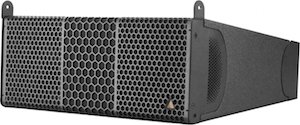 Adamson Systems Engineering added the S10n line array and the install-ready IS-SERIES family of loudspeakers. The S10n is a narrow-dispersion version of the S10 two-way, full-range line array cabinet. With identical specs to the S10, the S10n delivers a narrower 80° x 10° (H x V) dispersion pattern for tighter horizontal coverage requirements.
Adamson Systems Engineering added the S10n line array and the install-ready IS-SERIES family of loudspeakers. The S10n is a narrow-dispersion version of the S10 two-way, full-range line array cabinet. With identical specs to the S10, the S10n delivers a narrower 80° x 10° (H x V) dispersion pattern for tighter horizontal coverage requirements.
The IS-SERIES debuted with the IS7 mid-high and IS118 subwoofer. The IS7 is a two-way, full-range line array cabinet containing two ND7-X5, 7” Neodymium drivers and an NH3, 1.4” exit compression driver. The waveguide produces a slightly curved wavefront with a nominal dispersion pattern of 100° x 12.5° (H x V). The companion IS118 subwoofer is loaded with a lightweight, long excursion 18” ND18-S Kevlar Neodymium driver utilising Adamson’s Advanced Cone Architecture and a 4” voice coil. The IS-SERIES cabinet construction uses marine-grade birch plywood and aircraft-grade steel. As befits an install range, custom colours, multiple rigging points and other conveniences for the integrator are abundant.
Soundcraft – Notepads and Stageboxes
Soundcraft released three tiny analogue mixers, the Notepad-5, -8FX and -12FX. They’re three extremely useful desktop mixing surfaces that include Lexicon effects on the 8 and 12, and USB I/O connectivity. The range coames wioth one, two, or four preamps respectively, along with XLR outs.
Soundcraft also announced the Mini Stagebox 32i and Mini Stagebox 16i remote controlled I/O for Soundcraft Si series products, including the Si Impact mixing console. The new rack-mount stageboxes are equipped with Studer-designed preamps and feature a streamlined design that provides a MADI over RJ45 connector built right onto the chassis. No local hardware configuration or option cards are needed or required—engineers can simply plug in, power on, select inputs and control remotely using a Soundcraft Si console.
JBL – A12
The new VTX A12 line array loudspeakers have been designed form the ground up with a heavy emphasis on ease of rigging and transport. Packing dual 12s, four 5 inch mids, and three 2 inch transducers, JBL claim they’re now getting an extra 16dB SPL at 1m compared to the last generation. . A single front panel helps them achieve an IP55 rating, and installers can order them in in custom colours. It’s the new rigging system that particularly impresses; the A12s live four boxes high on their dolly. Pins can be inserted for angles as they sit, and on rigging, they take weight and lock. To bring the system down, simply drop back onto the dolly and hit a release lever. The rigging frame is made from lightweight steel from the aerospace industry and weighs just 42 kg.
JBL – EON ONE Pro
The new EON ONE Pro is JBL’s updated portable linear array PA. Now featuring a Li-ion Battery that gives you six hours operation at full power (more if you turn down a tad) and charges while powered, it’s smaller than EON One by about 20% and 1.1 kg lighter, but still producing the same SPL and frequency response. The mixer is mixer is now 7 channels with 4 combo jacks, Phantom and Hi-Z, plus a USB port for charging. There’s also XLR passthrough for hooking up another unit. Interestingly, the top of the mid-high has a hole for mounting a GoPro or a lighting accessory that’s in development
Fohhn – CMI takes distribution
Clever German loudspeaker, processing and amplifier manufacturer Fohhn are well known for their beam steering column speakers and endlessly useful install products. CMI Music and Audio have now taken distribution in Australia. Fohhns product range includes their Linea Focus DLI-130 and DLI-230 next generation Beam Steering line source speakers with digital signal inputs, and Focus Venue modular line array systems with Fohhn Beam Steering Technology and cardioid functionality. Both products offer AES/EBU, Dante or Optocore inputs built directly into the product, plus realtime application of all settings in their DSP. New at PL+S was their DI-Series amplifiers, new 19” rack units with DSP, logic links to power up in sequence, AES inputs, and optional modules for Dante or Optocore input.
Neutrik – Xirium Pro
Neutrik’s Xirium wirless signal distribution system has been updated and will launch in Australia mid May. Due to Australian regulations, we’ll be getting the same hardware version as the Canadians. Xirium Pro uses the 5 GHz band to send audio uncompressed up to several hundred metres.
Radial – Presenter and Key-Largo
Those problem-solvers at Radial were at it again with two wildly useful devices that everyone needs in their kit. The Key-Largo is a a combination keyboard mixer, DAC, effects loop and remote control in a compact pedal format. It has three stereo inputs channels with a level control and an effects send, a 4th input for a USB connection, a stereo effects loop that can be turned on and off using the left on-board footswitch, and stereo direct outputs to feed stage monitors. Isolated outputs feed the PA system. A middle latching footswitch with a contact closure can be used to activate a second effect in the loop. A third momentary footswitch is assigned for sustain. Side access MIDI connectors are available to pass-through data.
The Presenter combines a microphone preamp and a USB program input. The XLR mic input has phantom power, a high-pass filter and Low and High EQ. Program input level controls the volume of the USB input or the 3.5mm jack on the front of the unit. XLR outputs provide balanced feeds for a set of powered speakers, providing an all-in-one portable solution for any speaking engagement.
Subscribe
Published monthly since 1991, our famous AV industry magazine is free for download or pay for print. Subscribers also receive CX News, our free weekly email with the latest industry news and jobs.


